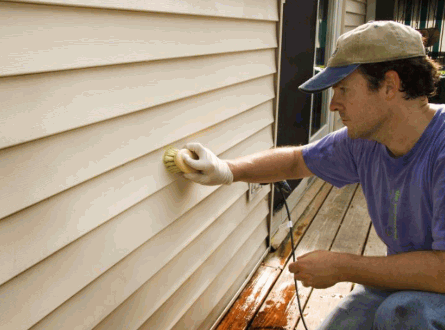Table Of Contents
External cladding serves a vital function in safeguarding a residence while simultaneously enhancing its aesthetic appeal. It is essential to maintain its cleanliness to ensure its longevity and prevent potential damage. This guide delves into the definition of external cladding, the importance of regular cleaning, and the various types available in the market. Additionally, it offers a comprehensive overview of the tools and materials required for effective cleaning, along with detailed step-by-step instructions. By following this guide, homeowners can learn how to maintain their cladding in optimal condition, ensuring that their home retains its visual appeal for years to come.
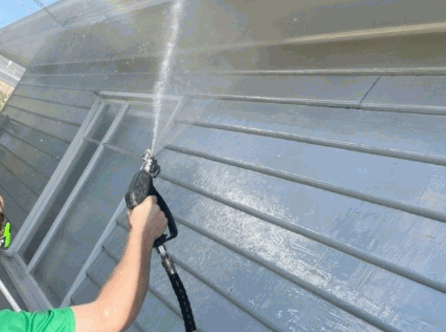
What Is External Cladding?
External cladding constitutes an essential element of contemporary architecture, functioning not only as an aesthetic enhancement for commercial buildings but also as delivering critical thermal insulation and energy efficiency.
This cladding can be made from a variety of materials, including wood, vinyl, aluminum, and composite materials, each presenting distinct advantages and applications.
The proper installation of external cladding is imperative, as it serves to protect against environmental elements such as moisture, which can result in mold growth, mildew, and water damage. This protection is vital for ensuring the longevity and safety of the structures it envelops.
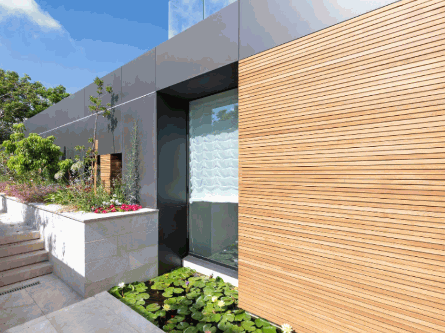
Why Is It Important To Clean External Cladding?
Regular cleaning cladding practices are essential for maintaining the health and safety of building occupants and maximizing the lifespan of the building's exterior.
Cleaning external cladding is crucial for preserving the integrity and appearance of commercial buildings. Neglecting this process can lead to serious issues, such as mold growth, water damage, and potential health risks, including asthma and allergies, for occupants.
Regular cleaning not only enhances the aesthetic appeal of the property but also ensures that cladding materials—whether wood, vinyl, or metal—remain in optimal condition, effectively contributing to thermal insulation and energy efficiency.
The implementation of a structured cleaning regime plays a vital role in prolonging the longevity of these exterior surfaces, thereby reducing the necessity for costly repairs or replacements in the future. A comprehensive maintenance strategy should include:
- Preventative Care: Routine cleaning facilitates the early detection of damage, allowing for timely interventions before minor issues escalate, thereby forming a vital part of the building's maintenance schedule.
- Health Protection: The removal of dirt, algae, and debris minimizes the risk of respiratory problems among occupants, fostering a healthier indoor environment, and reducing issues related to allergies.
- Aesthetic Value: Clean surfaces significantly enhance the impression a building creates for clients and visitors, positively impacting the business's reputation.
Incorporating a consistent cleaning schedule not only protects physical assets but also contributes significantly to the overall well-being of individuals who inhabit or work within the buildings.
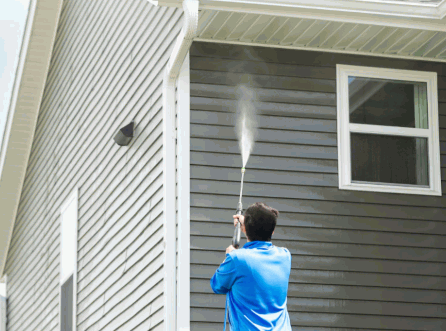
What Are The Different Types Of External Cladding?
External cladding is available in a variety of types, each presenting unique characteristics and benefits that cater to diverse architectural styles and climatic conditions.
Commonly utilized materials include:
- Wood cladding, which offers a natural aesthetic;
- Vinyl cladding, recognized for its low maintenance requirements;
- Aluminum cladding is esteemed for its durability;
- Composite cladding, which integrates multiple materials to enhance performance.
Furthermore, traditional options such as brick and stone cladding are often selected for their enduring beauty and robust structural properties.
Timber Cladding
Timber cladding is a widely regarded choice due to its natural beauty, warmth, and versatility, making it suitable for a variety of design styles ranging from rustic to modern. It offers excellent thermal insulation and energy efficiency; however, it necessitates regular maintenance to prevent issues such as mold growth and water damage, which can compromise both its structural integrity and aesthetic appeal over time.
By selecting timber cladding, homeowners can benefit from advantages that extend beyond mere visual appeal. One significant advantage is its exceptional insulating properties, which help to regulate indoor temperatures and ultimately result in reduced energy costs. Additionally, timber is an inherently sustainable material, being a renewable resource that, when sourced responsibly, minimizes environmental impact.
- Aesthetic Appeal: The rich textures and natural grain of timber create an inviting appearance that enhances any property.
- Environmental Benefits: Timber cladding is biodegradable and is often produced with minimal energy consumption.
- Insulation Properties: It provides excellent thermal performance, contributing to energy conservation.
To maintain its beauty and longevity, homeowners should be attentive to the required maintenance. Regular cleaning with mild detergents, a soft-bristled brush, and a pressure washer as needed, can prevent the accumulation of dirt and mildew. The application of protective finishes will help shield the timber from the elements, ensuring it retains its stunning appearance for years to come.
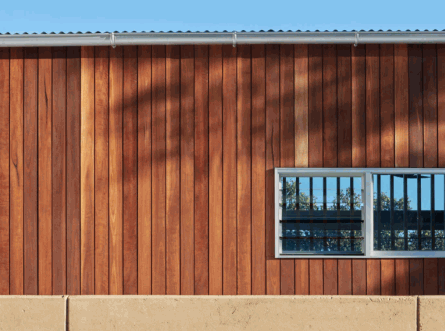
Vinyl Cladding
Vinyl cladding is recognized for its low maintenance requirements and exceptional durability, rendering it a preferred choice for many commercial buildings. Unlike traditional materials, vinyl cladding does not necessitate painting and can be easily cleaned using a pressure washer or mild detergent. This ensures that it maintains a fresh appearance while effectively protecting against moisture and other environmental factors.
The resilience of this material extends its lifespan, potentially leading to significant savings on replacement costs over time.
- Vinyl cladding is inherently resistant to common issues such as mold and mildew, thereby ensuring that these problems do not compromise its aesthetics or structural integrity, while also minimizing health problems such as asthma and allergies.
- The cleaning process is straightforward, typically requiring only a rinse with water or a diluted bleach solution for more stubborn stains.
- This ease of maintenance not only aids in preserving its appearance but also contributes to a healthier environment by minimizing allergens.
Given these qualities, vinyl cladding emerges as an ideal option for individuals seeking both aesthetic appeal and efficiency in their building's exterior, complementing other options such as PVC cladding for enhanced durability.
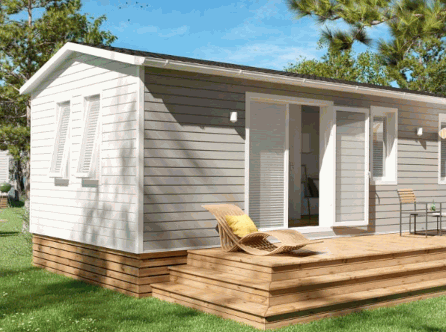
Metal Cladding
Metal cladding, particularly aluminum, is esteemed for its lightweight nature, durability, and exceptional resistance to weather elements, rendering it suitable for various building applications. This type of cladding exhibits high resistance to rust and corrosion, allowing it to withstand harsh environmental conditions while requiring minimal maintenance compared to traditional materials. Regular cleaning is vital to ensure its longevity and performance, especially in commercial settings.
The advantages of metal cladding extend beyond its physical properties. A significant benefit is its aesthetic appeal, as it is offered in a variety of colors and finishes that complement modern architectural designs. This versatility enables creative design opportunities while enhancing the overall visual impact of a building.
Key Advantages Of Metal Cladding:
- Durability: Metal cladding is resistant to fire, pests, and rot, making it a reliable choice for long-term structural protection.
- Weather Resistance: It can withstand extreme weather conditions, including heavy rainfall, snow, and intense sunlight, ensuring the integrity of buildings.
- Energy Efficiency: By reflecting solar heat, metal cladding contributes to reduced energy consumption and costs.
To maintain its appearance and prevent corrosion, the following best practices are recommended: use of appropriate cleaning agents and tools such as a soft-bristled brush or soft cloth.
- Conduct regular inspections to identify any signs of wear or damage.
- Clean the surface periodically using a mild detergent and water, or a cleaning solution with sodium percarbonate, to remove dirt and grime.
- Promptly address any scratches to prevent moisture infiltration.
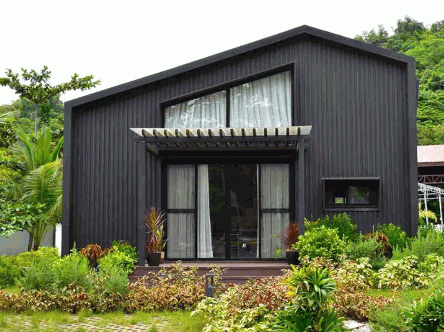
Brick Cladding
Brick cladding represents a traditional and timeless choice that provides exceptional structural integrity and insulation properties, making it a favored option for commercial buildings that seek both durability and aesthetic appeal. This form of cladding not only enhances the exterior appearance of a structure but also offers excellent resistance to fire and adverse weather conditions, thereby ensuring long-lasting performance.
Due to its robust characteristics, brick cladding acts as an effective barrier against environmental challenges while promoting energy efficiency. The aesthetic value is further enhanced by the variety of colors and textures available in brick options, allowing for customization to align with specific architectural visions. Its remarkable insulation properties help maintain optimal indoor temperatures throughout the year, potentially resulting in reduced energy costs.
- Durability: Withstands harsh weather and impacts.
- Aesthetic Value: Offers timeless beauty and versatility.
- Insulation: Enhances energy efficiency.
To preserve the impressive appearance and functionality of brick cladding, regular cleaning is essential. Techniques such as power washing, gentle scrubbing with a mild detergent, and the application of specialized masonry cleaners can prevent the accumulation of dirt and moisture, which could lead to complications such as mold growth or material degradation.
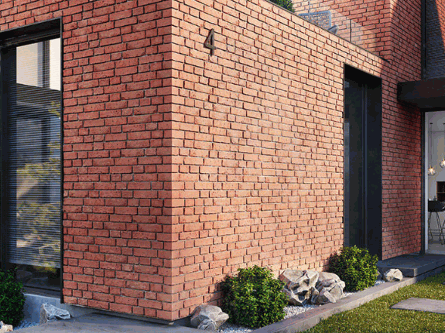
Composite And Aluminium Cladding
Composite and aluminum cladding integrate multiple materials to provide a robust and versatile exterior solution that enhances both energy efficiency and durability for contemporary buildings.
This innovative cladding option effectively replicates the appearance of wood or metal while offering superior resistance to rot, pests, and weather-related damage. As a result, it presents an appealing choice for architects and builders.
In the context of today’s sustainable building practices, composite cladding is distinguished by its aesthetic versatility, allowing for a broad range of design possibilities that can complement various architectural styles. The durability of the material ensures an extended lifespan, which reduces the frequency of replacements and associated costs, ultimately benefiting both homeowners and developers. Additionally, its improved insulation properties contribute to enhanced energy efficiency, leading to reduced energy expenses and a smaller carbon footprint.
Maintenance of composite cladding is straightforward, with periodic cleaning recommended to preserve its appearance. Specific stains or debris can generally be addressed with mild detergents. Conducting routine inspections for scratches or imperfections will also aid in maintaining the exterior in pristine condition.
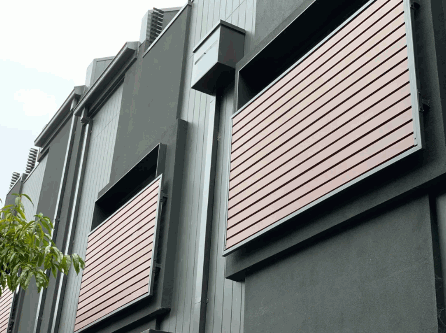
What Are The Tools And Materials Needed To Clean External Cladding?
To effectively clean external cladding, it is essential to utilize a range of tools and materials that ensure both efficiency and safety, ultimately prolonging the lifespan of the cladding materials.
Key items include:
- a pressure washer for comprehensive cleaning,
- a soft-bristled brush for gentle scrubbing,
- a suitable cleaning solution designed to address mold and debris,
- and appropriate safety gear to protect the user during the maintenance process.
Soft-bristled Brush
A soft-bristled brush is a vital tool for cleaning cladding, as it effectively removes dirt and debris without causing damage to the surface of the material. This tool is particularly beneficial for delicate surfaces such as wood cladding, where the use of harsher tools may result in scratches or compromise the integrity of the material.
Utilizing a soft-bristled brush provides numerous advantages for maintaining various cladding types, including vinyl, metal, and composite materials. Unlike abrasive scrubbers, the soft bristles deliver a gentle yet thorough cleaning action, ensuring that stains and grime are effectively lifted without harming the finish.
To enhance cleaning efforts, it is recommended to soak the brush in a mild cleaning solution before gently scrubbing the surface in a circular motion.
- Always begin from the top and work downwards to prevent streaking.
- After use, rinse the brush thoroughly to eliminate any residue and allow it to air dry, which will extend its lifespan.
Regular maintenance of the brush, including proper storage away from direct sunlight, will ensure that its bristles remain in optimal condition, preparing it for future cleaning tasks.
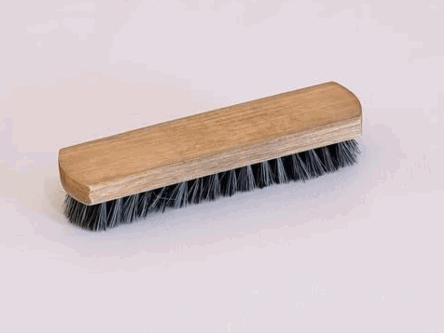
Mild Detergent
Utilizing a mild detergent as a cleaning solution is essential for effectively removing grime, mold, and mildew from external cladding while ensuring that the materials remain undamaged during the cleaning process. When diluted with water, a mild detergent can penetrate surfaces and break down stubborn stains, resulting in a thorough clean.
Selecting the appropriate cleaning products is critical to maintaining the integrity and appearance of cladding, as harsher chemicals may lead to deterioration or discoloration over time. A mild detergent, specifically formulated for various surfaces, can address a wide array of contaminants, including:
- Grease marks that accumulate due to weather changes.
- Blockages in gutters due to accumulated debris.
- Dust and debris resulting from environmental exposure.
- Organic matter such as leaves and moss.
- Faded areas caused by sun exposure.
To utilize the detergent effectively, mix it with warm water according to the product instructions, apply it using a soft cloth or sponge, and rinse thoroughly with clean water. Additionally, consider alternatives such as vinegar solutions for biodegradable options, or specialized cleaners for materials such as vinyl, wood, PVC, or aluminum that may require specific care.
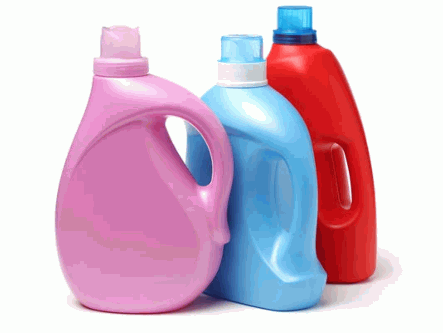
Pressure Washer
A pressure washer is a highly effective tool designed to enhance the efficiency of the cleaning process by delivering high-pressure water jets capable of removing dirt, mold, and debris from external cladding surfaces. This equipment proves particularly advantageous for larger areas of cladding, significantly reducing the time and effort required when compared to manual cleaning methods.
The utilization of a pressure washer offers several benefits that make it a preferred option for homeowners and professionals alike. Notably, it facilitates deeper penetration into crevices and hard-to-reach areas that traditional cleaning methods may overlook.
When operating a pressure washer, it is essential to consider the following guidelines:
- Settings: Adjust the pressure setting according to the material of the cladding to prevent potential damage.
- Technique: Begin from a distance and gradually approach the surface to achieve the desired level of cleanliness without stripping paint or causing dents.
Furthermore, it is imperative to wear appropriate safety gear, including goggles and sturdy footwear, to protect against flying debris. Additionally, ensuring that the area is clear of bystanders is crucial to prevent accidental injuries. By adhering to these simple precautions, users can maximize the effectiveness of this tool while minimizing potential risks.
Explore further: How Much To Pressure Wash A Roof
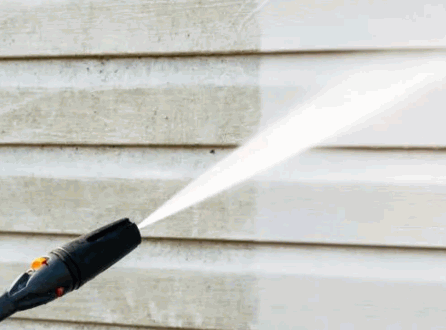
Bucket
A sturdy bucket is essential for mixing cleaning solutions and transporting water during the cleaning process of external cladding. It allows the user to safely and conveniently prepare an adequate amount of cleaning solution, ensuring sufficient coverage for the entire area being cleaned. The bucket functions as a versatile tool that not only simplifies the cleaning operation but also enhances efficiency, thereby reducing the time required to complete the task.
When maintaining cladding, one must recognize the importance of having adequate supplies, as these are crucial for achieving effective results. A well-prepared cleaning setup may include:
- Quality Cleaning Solutions: Utilizing the appropriate mixture ensures optimal cleanliness without causing damage to the cladding material.
- Proper Tools: Items such as brushes, scrub pads, and squeegees complement the bucket, facilitating a more thorough cleaning process.
- Protective Gear: Safety equipment, including gloves and goggles, is vital for maintaining skin and eye safety while handling chemicals.
Having all these tools readily accessible promotes seamless transitions during the cladding maintenance process, ultimately leading to a superior outcome.
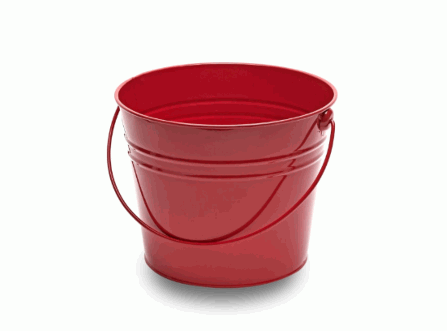
Ladder
A ladder is a critical component of safety equipment when accessing elevated areas of external cladding, including aluminum cladding, that requires cleaning, ensuring that all surfaces are adequately reachable during maintenance. The proper use of a ladder is essential in preventing accidents and facilitating thorough cleaning of hard-to-reach areas, which is vital for maintaining the structural integrity of the building.
When employing a ladder for cleaning purposes, adherence to safety measures is of utmost importance. The significance of accessibility cannot be overstated, as a correctly positioned ladder can significantly reduce the risk of falls and injuries. It is advisable to:
- Conduct a thorough inspection of the ladder for any defects before use.
- Ensure that the ladder is placed on a stable, level surface.
- Utilize a spotter when operating at considerable heights.
Additionally, wearing appropriate safety gear, such as helmets and harnesses, further enhances safety during the cleaning process. By prioritizing these practices, the likelihood of accidents is substantially diminished, facilitating a seamless and effective cleaning operation.
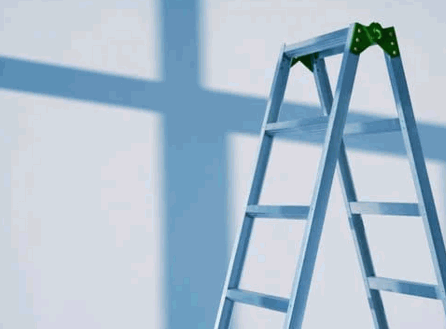
Protective Gear
The use of protective gear is essential when cleaning external cladding to prevent potential health issues, such as allergies or asthma exacerbated by exposure to mold and dust. Necessary protective equipment includes gloves, goggles, and masks, which collectively ensure the safety of the individual performing the cleaning tasks, particularly when employing chemical cleaning solutions.
Given the various risks associated with cleaning activities, it is imperative to select appropriate equipment that not only provides physical protection but also minimizes the inhalation of harmful substances. The use of protective gear significantly decreases the likelihood of encountering serious health issues.
The following items are recommended:
- Gloves: These protect the hands from harsh chemicals and ensure the safe handling of cleaning tools.
- Goggles: Essential for safeguarding the eyes from splashes and airborne irritants that may lead to irritation or injury.
- Respirators or masks: These devices assist in filtering harmful particles from the air, thereby reducing the risk of respiratory complications.
By prioritizing the use of protective gear, individuals can effectively mitigate health risks while ensuring the cleanliness and safety of external cladding.
What Are The Steps To Clean External Cladding?
Cleaning external cladding necessitates a systematic approach that guarantees comprehensive coverage while minimizing the risk of damage to both the materials and adjacent structures.
The process generally involves several key steps:
- Preparing the work area
- Removing any loose debris
- Mixing an appropriate cleaning solution
- Applying it in an effective manner
This methodical approach ensures the proper use of safety gear and the employment of suitable tools, such as pressure washers and soft-bristled brushes, to achieve optimal results. Additionally, calling a professional service can provide expertise in handling more challenging cleaning tasks.
Prepare The Area
Preparing the area prior to cleaning external cladding is essential for ensuring a safe and efficient cleaning process. This preparation involves removing any obstacles, covering nearby plants or furniture to protect them from cleaning solutions, and ensuring that all necessary safety gear is worn to mitigate risks during the cleaning procedure.
When undertaking a cleaning project, implementing a few preliminary steps can significantly enhance both the outcome and the overall safety of the task.
Begin by thoroughly assessing the work area:
- Remove any items that may obstruct access to the cladding.
- Secure any loose debris that could become hazardous during the cleaning process.
- Cover delicate plants or furnishings with protective tarps to shield them from potential damage.
Furthermore, ensuring that safety gear such as goggles, gloves, and masks are readily available is paramount. By being proactive in these preparations, one can safeguard both the environment and personal well-being, thereby facilitating a smooth cleaning experience.
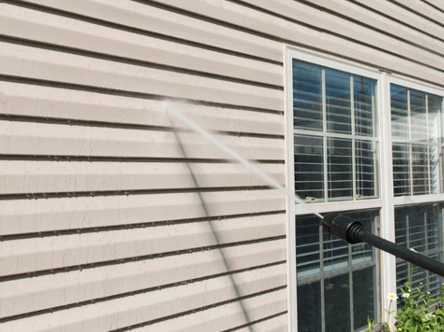
Remove Loose Debris
The removal of loose debris from external cladding prior to the application of any cleaning solution is essential. This practice not only enhances the effectiveness of the cleaning process but also prevents potential damage to the cladding materials. By clearing away dust, leaves, and other materials, the risk of mold growth is minimized, and the cleaning solution is better able to penetrate and clean the surface effectively.
To achieve optimal results, it is vital to employ appropriate tools during this preparatory phase. The use of soft-bristled brushes is highly recommended, as they effectively dislodge dirt without causing scratches or abrasions to the cladding surface. Additionally, a handheld vacuum can be useful for removing larger debris particles.
The following methods are effective for debris removal:
- Brushing: Carefully brush the surface to loosen any stubborn dirt.
- Vacuuming: Utilize a vacuum with a soft brush attachment to gently draw up debris.
- Rinsing: In areas with significant buildup, a gentle rinse with water can assist in clearing out remaining debris.
By incorporating these techniques into the cleaning routine, property owners can ensure a cleaner, more presentable exterior while also extending the lifespan of their cladding.
Mix Cleaning Solution
Mixing an appropriate cleaning solution is a critical step in the cleaning process for external cladding, as it ensures that the detergents effectively remove dirt, mold, and mildew. A commonly recommended mixture consists of a mild detergent combined with water, which provides a gentle yet efficient solution suitable for various cladding materials.
To achieve optimal results, it is essential to select the correct ratio of detergent to water. A typical guideline suggests mixing 1 part detergent to 10 parts water, with the possibility of adjusting this ratio for more stubborn stains. For resilient surfaces, such as vinyl or composite materials, a stronger solution may be necessary, such as a ratio of 1:5.
It is advisable to conduct a spot test in a discreet area to prevent potential damage. It is important to recognize that different cladding types, including wood, stone, and metal, possess unique properties, which require specific cleaning agents:
- Wood: Utilize a solution containing oxygen bleach.
- Vinyl: A simple mixture of soap and water is effective.
- Stone: Choose a neutral pH cleaner to avoid etching.
By carefully considering these factors, the effectiveness of the cleaning process can be significantly enhanced, thereby prolonging the lifespan of the cladding.
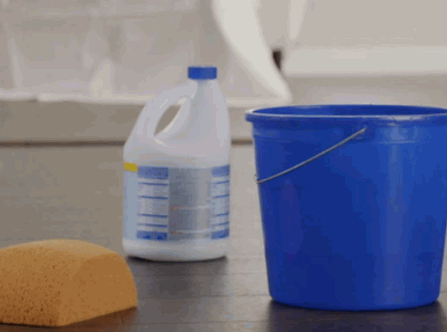
Apply Cleaning Solution
The application of the cleaning solution to the external cladding should be conducted methodically, ensuring that all areas receive sufficient treatment while avoiding oversaturation. It is advisable to utilize a spray nozzle or a soft-bristled brush to evenly distribute the solution, allowing it to effectively penetrate and break down grime and mold.
To enhance the effectiveness of the application, it is recommended to work in sections, treating one area at a time. This approach not only helps maintain focus on ensuring thorough coverage of each surface but also minimizes the risk of the solution drying too quickly.
For optimal results, consider the following guidelines:
- Adjust the spray nozzle to deliver a fine mist for an even application.
- Employ a soft-bristled brush to gently scrub stubborn spots without damaging the cladding.
- Apply the cleaning solution in vertical passes for a more controlled approach.
- Allow the solution adequate contact time, generally around 10-15 minutes, to penetrate effectively before rinsing.
It is also prudent to monitor weather conditions; conducting this task on a cloudy day is preferable to prevent the solution from evaporating too quickly due to direct sunlight.
Scrub The Cladding
Scrubbing the cladding with a soft-bristled brush is an essential component of the cleaning process, as it effectively lifts dirt and grime loosened by the cleaning solution. This gentle scrubbing action is critical for maintaining the integrity of the cladding while ensuring a thorough cleaning of the surface.
Selecting the appropriate brush for cladding composed of various materials can significantly influence the cleaning results. For example, when cleaning vinyl cladding, a brush with synthetic bristles strikes an optimal balance between rigidity and softness, enabling the effective removal of stubborn stains without scratching the surface. In contrast, for wooden cladding, a natural bristle brush may be more suitable, as it can conform to the textured surface, ensuring that the cleaning solution penetrates effectively without causing damage to the wood.
- It is essential to ensure that the brush is clean before use to prevent the transfer of dirt.
- Regular rinsing of the brush during the scrubbing process is advisable to maintain its effectiveness.
Utilizing the appropriate brush type tailored to the cladding surface not only safeguards the material but also enhances the overall cleanliness and appearance of the property.
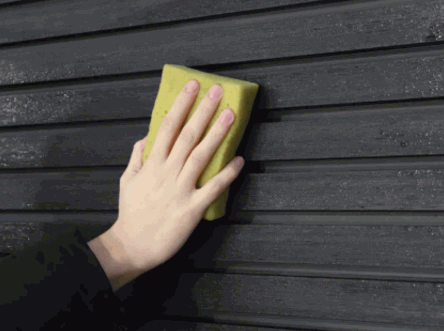
Rinse With A Pressure Washer
Rinsing the cladding with a pressure washer is an effective method for removing any residual cleaning solution and dirt following the scrubbing process, thereby ensuring a comprehensive cleaning of the surface. This technique not only accelerates the cleaning process but also protects the cladding materials from potential damage associated with harsh scrubbing methods.
Proper utilization of a pressure washer necessitates the selection of appropriate settings to avoid causing damage. It is advisable to begin with a lower pressure setting, typically ranging from 1500 to 2000 PSI, as this is gentle enough for most types of cladding. This approach ensures that the cleaning process remains efficient while minimizing the risk of harm to softer surfaces.
To optimize rinsing techniques, consider the following guidelines:
- Maintain the nozzle at a minimum distance of 18 inches from the cladding.
- Rinse the surface from the top down to facilitate the downward flow of debris.
- Utilize a wide spray pattern to ensure an even distribution of water.
By adhering to these practices, one can enhance the effectiveness of the rinsing process while preserving the integrity of the cladding. Along with ensuring cleanliness, this step is crucial for extending the lifespan of exterior surfaces.
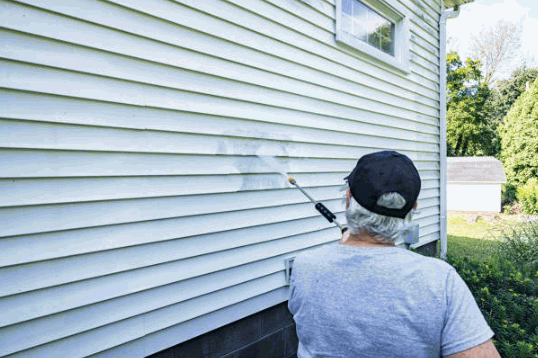
Dry The Cladding
Thoroughly drying the cladding, including surfaces such as PVC cladding, after cleaning is essential to prevent moisture retention, which can lead to mold growth and water damage over time. Utilizing a soft cloth or allowing the cladding to air dry in a well-ventilated area ensures that all surfaces are adequately dried and maintained.
The importance of this final step in the maintenance routine cannot be overstated, as it significantly contributes to the longevity of the material. Proper drying techniques are vital for preserving the exterior surfaces in optimal condition, especially for cladding made from materials like PVC.
- Utilize fans or dehumidifiers to expedite the drying process, particularly in areas where ventilation may be limited.
- Pay special attention to joints and seams, as moisture can easily accumulate in these vulnerable areas.
- Incorporate periodic inspections following cleaning to ensure that no moisture is trapped, which assists in mitigating potential damage over time.
Implementing these precautions creates an environment conducive to maintaining the resilience of the cladding and protecting it from the detrimental effects of prolonged dampness.
How Often Should External Cladding Be Cleaned?
Determining the appropriate frequency for cleaning external cladding is contingent upon several factors, including the type of cladding material such as cladding made from PVC, local environmental conditions, and the overall maintenance schedule for the building. Typically, a routine cleaning interval of every 6 to 12 months is recommended to mitigate issues such as mold growth and to maintain the aesthetic appeal and structural integrity of the cladding.
The material utilized for external cladding can significantly influence the required cleaning frequency. For example, vinyl and aluminum may necessitate less frequent cleaning compared to materials such as wood or stone, which are more prone to trapping dirt and moisture. PVC cladding, being durable and easier to clean, also requires less frequent maintenance.
Environmental conditions also play a critical role in determining cleaning frequency. Buildings located in coastal areas may experience salt deposits, thereby requiring more frequent washdowns compared to those situated in arid regions. Furthermore, urban environments typically expose cladding to higher levels of pollution and grime, necessitating more diligent upkeep.
- Climate Factors: Rain, humidity, and temperature fluctuations contribute to the rate of dirt accumulation.
- Surrounding Vegetation: Proximity to trees may result in an increase in leaf debris and staining.
Establishing a well-structured maintenance schedule that takes these factors into account not only enhances the longevity of the cladding but also increases the overall value of the property.
